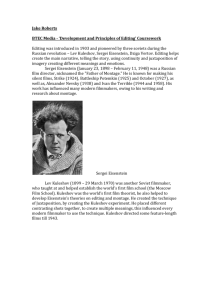Soviet Montage - WordPress.com
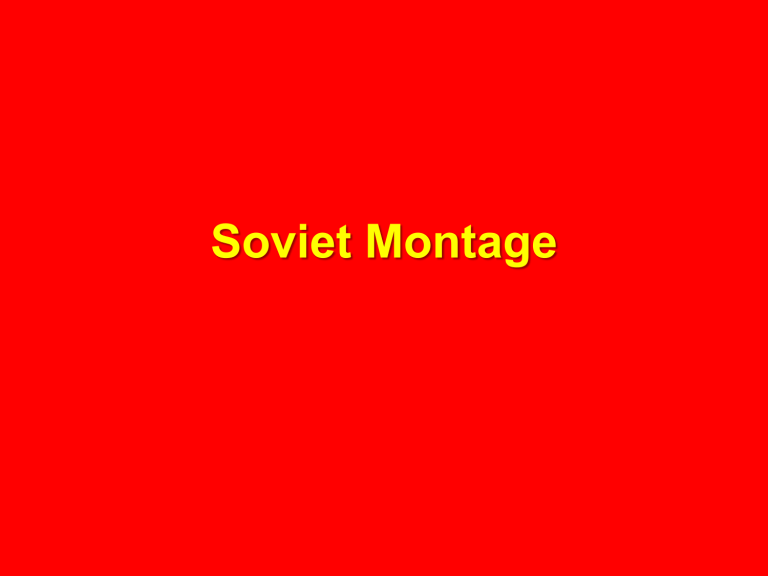
Soviet Montage
Just as Marxism is a reactionary commentary and critique of capitalism,
Marxist film theory critiques the Hollywood narrative.
The Soviet Montage movement began in
1924/25 and ended at 1930. During the
Montage movement's existence, perhaps fewer than thirty films were made in the style.
• In 1917 there have been two revolutions in
Russia. The February Revolution eliminated the Tsar's government. The second revolution took place in October.
Vladimir Lenin was the leader of the revolution and the Union of Soviet
Socialist Republics was created.
Narkompros, founded in 1918, controlled the film industry.
• Narkompros established the State Film
School in 1919. A year later Lev Kuleshov joined the State Film School and formed workshops. Kuleshov's experiments were showing how important editing is and he developed the central idea to the Montage theory and style.
• Lenin saw cinema as the most important art, most probably because it is an effective medium for propaganda and education.
Kuleshov Effect
• The Kuleshov Effect is a well-documented concept in film-making, discovered by
Soviet film editor Lev Kuleshov in the
1920s. Kuleshov put a film together, showing the expression of an actor, edited together with a plate of soup, a dead woman, and a woman on a recliner.
• Montage editing can be seen as an alternative to CONTINUITY EDITING (or the classical Hollywood style). Continuity editing strives to make the editing invisible; done well, as in most Hollywood movies, the audience is barely aware of camera movement or cuts.
• Montage, on the other hand, uses editing to construct the meaning of the piece rather than as a means to an end. The effect, thus, isn’t only in the shots; it’s in the order of the shots.
Continuity Editing vs Montage
• Smooth transition between two shots
• Seamless, Setting takes precedence, staged and worked upon arrangement
• A bevy of editing techniques and strategies used for a more market friendly product.
• Privileged Look
• Clash of one image against the other
• Hurried, urgent, Action takes precedence
• Sees continuity as a distancing device and gives way for a democratic interplay between shots, geared towards and intellectual and emotional response
• Urgent feel
Methods of montage:
• Metric – where the editing follows a specific number of frames (based purely on the physical nature of time), cutting to the next shot no matter what is happening within the image. This montage is used to elicit the most basal and emotional of reactions in the audience.
• this is the running time of the shot or each of the shots.
• Rhythmic – includes cutting based on time, but using the visual composition of the shots — along with a change in the speed of the metric cuts — to induce more complex meanings than what is possible with metric montage.
• this combines elements of the first concept
/ since it is about rhythm, the combination or collision of two shots or the "rhythm" of the shots. How the movement in one shot affects the movement in the next shot.
Here, movement takes precedence over length.
• Tonal – a tonal montage uses the emotional meaning of the shots — not just manipulating the temporal length of the cuts or its rhythmical characteristics — to elicit a reaction from the audience even more complex than from the metric or rhythmic montage. For example, a sleeping baby would emote calmness and relaxation.
• Overtonal/Associational – the overtonal montage is the cumulation of metric, rhythmic, and tonal montage to synthesize its effect on the audience for an even more abstract and complicated effect.
• How the viewer feels after watching the film.
• Intellectual – uses shots which, combined, elicit an intellectual meaning.
• this is the conscious creation of new ideas when two shots or images are cut together to form a new idea or object.
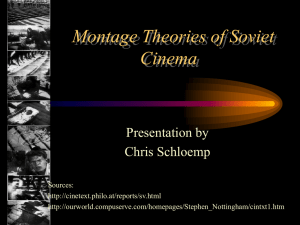
![Beyond the shot [the cinematographic principle & the ideogram]](http://s2.studylib.net/store/data/005478862_1-b57d7625e5fa0aeba060869b1aae8735-300x300.png)
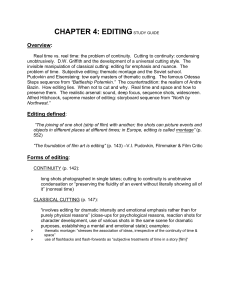
![[Lecture 17] soviet montage 3 for wiki](http://s2.studylib.net/store/data/005394749_1-74b063163f399dbb4123cebb7c05cab3-300x300.png)

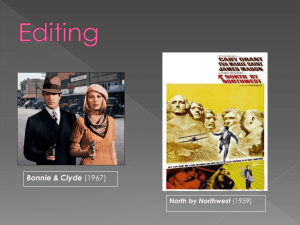
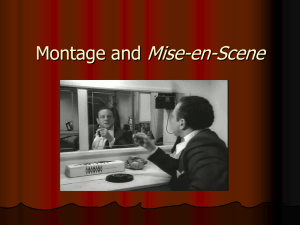
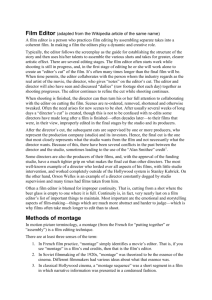
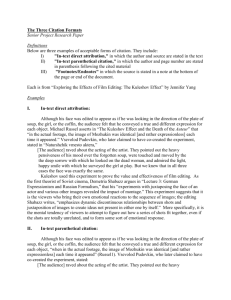
![[Lecture 11] french impressionism 2 wiki](http://s2.studylib.net/store/data/005312004_1-a91ff3d76aa998988e8364ab8758ea87-300x300.png)

